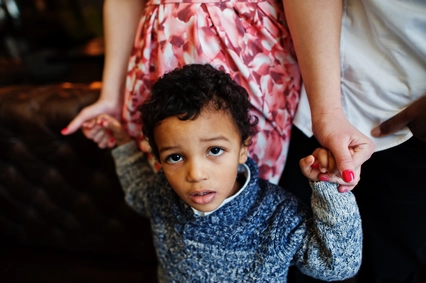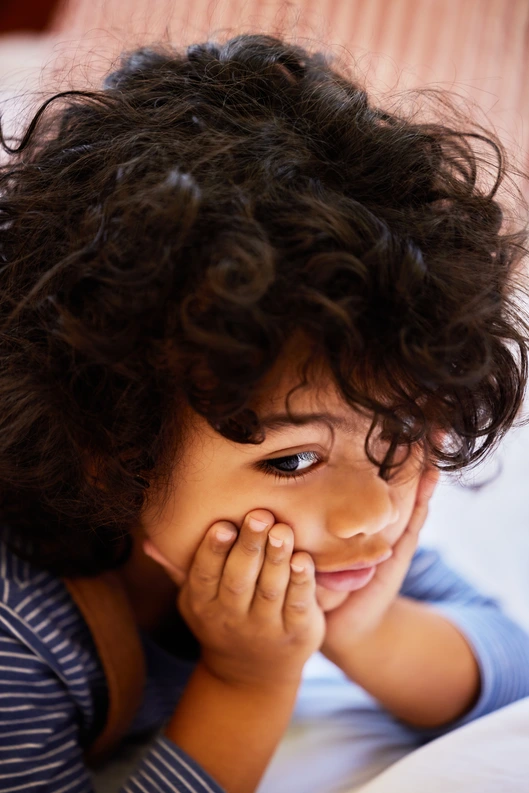
Autism Spectrum Disorder
Dr. Ajay Bedi
MBBS, DA
Founder and Director,
East Delhi Medical Centre
WHO says that, one in every 100 children has Autism. The figure is even worse for the Indian demographic. According to a 2021 study in the Indian Journal of Pediatrics, 1 in 68 children in India has autism.
But what is Autism? Should you be scared about your new born having it? And if your child is diagnosed with it, is the end of the world? No!
What is Autism (Autism Spectrum Disorder ) ?
Autism is a neurodevelpmental disorder that impacts a person’s social interactions, communication and patterns of behavior. It is a spectrum disorder which means that two individuals with autism can exhibit very different characteristics.
The Characteristics of Autism
A person with autism will have a few or more of the following characteristics in varying degrees of severity.
Poor communication skills
- Limited vocabulary
- Repetition of certain sounds and words (echolalia)
- Not responding to own name
- Unusual tone of voice (sing-song like or robot-like)
- Inability to understand nonverbal cues (facial expressions, change in tone, sarcasm etc.)
- Some individuals with autism may remain nonverbal throughout life
Poor social skills
- Poor eye contact
- Expressions and gestures not matching words
- Difficulty adjusting their behavior to social situation
Poorly adjusted behavior
- Resistance to change
- Oversensitiveness to certain sounds, lights, or textures
- Excessive focus on certain topics or activities
- Difficulty with change in routines
- Stimming (repetitive actions like hand flapping, rocking body movement, head banging, finger clicking etc.)
- Restricted interests
- Hyperactivity
In some cases, autism may present itself in individuals along with associated conditions like ADHD (attention deficit hyperactivity disorder), IDD (Intellectual disability),Epilepsy, Prader willis syndrome
Hyperlexia and Semantic pragmatic and sensory integration disorder (SCD)

Types of autism
Autism spectrum disorder has a diverse group of conditions and can be categorized into 5 types.
Autistic disorder
Autistic Disorder is also known as classic autism. It is characterized by significant impairments in social interaction, communication, and the presence of repetitive behavior (speech) or interests. They are also overwhelmed by social and other stimulation.
According to the Diagnostic and Statistical Manual of Mental Disorders (DSM-5), individuals with autism may have difficulties in understanding and responding to social cues, forming relationships, and may exhibit a preference for routine and sameness. The American Psychiatric Association defines it as one of the core types of autism spectrum disorder (ASD).
Asperger’s syndrome
Asperger’s syndrome is a sub type of autism spectrum disorder characterized by difficulties in social interaction and nonverbal communication, along with restricted and repetitive patterns of behavior and interests. Unlike classic autism, individuals with Asperger’s syndrome typically have average to above-average intelligence and language development. Common features may include intense focus on specific interests, difficulty understanding social norms, and challenges in interpreting nonverbal cues such as facial expressions or gestures. A point to note is that there is no significant delay in language or cognitive development.
Rett syndrome
Rett syndrome is a rare genetic disorder primarily affecting females, characterized by a regression of developmental abilities, including loss of speech and motor skills.
Typically, infants with Rett syndrome initially develop in line with expectations for the first six months of life. However, thereafter, they experience a regression, losing previously acquired skills such as crawling, walking, communication, and manual dexterity.
As the condition progresses, children with Rett syndrome may encounter escalating difficulties with muscle control, coordination, and communication. Seizures and intellectual disabilities are also common manifestations of the disorder. Although most of the time Rett Syndrome is caused by a gene mutation, it is rarely inherited.
Childhood disintegrated disorder
Childhood disintegrative disorder (CDD) is another rare kind of Autism, where a significant loss of previously acquired skills, such as language, social, and motor skills occur. This condition typically affects children between ages 2 and 10. Symptoms may include, but are not limited to, rapid and severe decline in functioning, repetitive behaviors, social withdrawal, and difficulties with communication and adaptive behaviors.
Pervasive Developmental disorder/ PDD NOS ( Pervasive developmental disorder not otherwise specified )
When symptoms of the individual are not corresponding to any other specific disorder of ASD, then we term it as PDD NOS. Many children with PDD NOS may be too social. This diagnosis is made when the individual is suffering from some but not all symptoms or has relatively mild symptoms.
This is also called Threshold Autism. Individuals suffering from this have trouble in communication, play and interaction
What causes autism?
We have not been able to identify a clear causal relationship with specific factors but there are various causes which scientists and research across the years have attributed to autism
- Genetic mutations
- Genetic/Chromosomal conditions like Tuberous Scheloris
- Family history
- Late pregnancy
- Low birth weight
- Premature birth
- Parents with genetic or chromosomal abnormalities
- Neuroanatomical abnormalities
- Fragile X syndrome
During pregnancy some factors that may cause autism are
- Exposure to toxins
- Exposure to lead, mercury or heavy metals like harmful pesticides
- Exposure to radiation toxicity
- Alcohol or drug consumption by pregnant mother
- Autoimmune disease of the mother
- Lack of oxygen to baby’s brain while in the womb
- Infections during pregnancy
- Health issues during pregnancy
Early detection of autism in Children
As we always mention, Early detection will help with early intervention. Here are some symptoms to look out for in your infant and/or toddler.
- Does not respond to name
- Does not show interest in interactive play like peek a boo
- Rocks his/her body or flaps hands often or spins in circles
- Does not show happy or sad facial expressions
- Does not look in the direction of pointed objects
- Gets upset with changes
- Shows unusual reactions to lights, sounds, smells, or touches
- Lines up toys or plays with them in a repetitive manner
- Prefers to play alone
- Shows rigidity to routines
- Shows excessive focus on parts of objects like wheels of toy cars
- Uses the same words over and over
- Limited or no babbling
- Limited or no speech
- Delayed language milestones
- Rejects cuddles
- Lacks pretend play skills
- Unusal obsessions
- Performs self-harm activities like head banging or biting self
Who can diagnose Autism?
Autism can be clinically diagnosed between the ages of 2 to 8 years. If your child exhibits abnormal or socially inappropriate behaviour then it is advisable to consult with a pediatrician or a child psychologist who will do a detailed assessment of the child.
Is Autism reversible? / Can Autism be cured?

Autism is a lifelong disorder. No medicine can reverse it but there are many interventions one can adopt depending on the type and severity of the symptoms. A person with autism will have difficulty in making friends, maintaining conversations, and relationships. Due to their problem with social adjustment, they will face hurdles in their academic and professional life too.
It is important to start interventions as soon as a child is diagnosed with autism as it will help him adjust better in the classroom and peer circles. Some therapies widely known to help to help children with autism are
ABA/Applied behaviour analysis
A form of psychological intervention where an individual is conditioned through various methods like discreet trial training, pivotal response training, etc. to mold one’s behaviour
Special education
A special educator will focus on overall development and adjustment of the child. He/She will provide individualized education to the child whilst using behaviour modification strategies to modify the child’s behaviour to suit the social environment.
Speech therapy
This would benefit the child in improving his verbal and non-verbal communication. A speech therapist would help the child learn the skill to express his ideas, wants and needs. Further, the child would be helped in understanding what is being said to them and how to respond to that
Occupational therapy
Children with autism have very specific sensory needs. Occupational therapists would cater to the child’s sensory processing issues. They would also help develop skills of handwriting and ADL (activities of daily living)
Cognitive behaviour therapy
There is often emotional and mental overload on children with Autism. This method is primarily directed towards managing thoughts which generate feelings, which impact behavior. CBT assists the child in avoiding/managing certain emotions. It will train them in ways to interpret and feel about certain situations.
Parent mediated interventions
Parents are the primary caregivers to their children so it is crucial for parents to learn strategies that they can adopt at home with their child with autism. In parent mediated intervention, therapists like speech therapists, special educators, behavior therapists and occupational therapists train parents to further provide interventions to the child.
Educational support through classroom interventions
School plays an important role in the child’s overall development. Subject teachers, counselors and special educators come together to provide classroom interventions to the child with autism so that he is better able to adjust in the school environment. The goal is to study in least restricted environment.
Conclusion
Understanding Autism is about Embracing neuorodiversity, Teaching and practicing empathy, and building an inclusive community.
Let us challenge stereotypes and replace ignorance with education. Autism is a disorder but it is not a barrier to life. It is a rather different way of perceiving and interacting with the world.
Moving forward, let’s focus on empathy and acceptance, recognizing the strengths and talents of individuals with autism.
